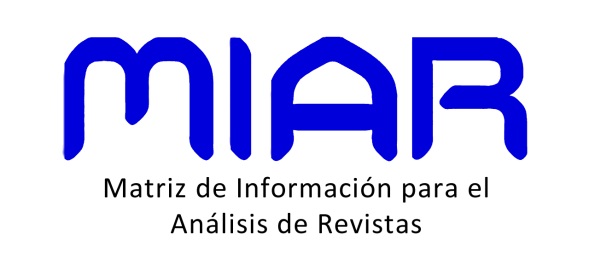Epistemic vigilance and discursive marking in interactional co-construction
DOI:
https://doi.org/10.24215/18536212e077Keywords:
interaction, epistemic surveillance, discursive marking, teaching SpanishAbstract
We will present how speakers put epistemic vigilance into operation on the information co-constructed in colloquial interaction. The activation of these cognitive mechanisms leaves its traces in various types of discursive marking that speakers produce in the corpus of conversations analyzed for this study. Epistemic, mirative and radical or deontic markings account for the coordinated way with which speakers co-construct the project of inquiry – information – in the development of conversational dynamics. Finally, we highlight the need to teach these contents in courses of Spanish as a Second and Foreign language.
Downloads
References
Abad Castelló, M. y Álvarez Baz, A. (2021). Aprendizaje basado en datos y combinaciones léxicas: una propuesta didáctica con cuasisinónimos. MLS Educational Research, 5(2), 88-104. https://doi.org/10.29314/mlser.v5i2.562
Aikhenwald, A. (2012). The essence of mirativity. Linguistic Typology, 16(3), 435-485. https://doi.org/10.1515/lity-2012-0017
Angelina Oliveira, A. (2024). Producciones escritas de angloparlantes en el marco de exámenes CELU [Tesis de doctorado, Universidad Nacional de Misiones]. https://hdl.handle.net/20.500.12219/5564
Arundale, R. (1999). An alternative model and ideology of communication for alternative to politeness. Pragmatics, 9, 119-153. https://doi.org/10.1075/prag.9.1.07aru
Arundale, R. (2010). Constituting face in conversation: Face, facework, and interactional achievement. Journal of Pragmatics, 48, 2078-2105. https://doi.org/10.1016/j.pragma.2009.12.021
Baumgarten, N. y House, J. (2010). I think and I don'´t know in English as lingua franca and native English. Journal of Pragmatics, 42, 1184-1200. https://doi.org/10.1016/j.pragma.2009.09.018
De Lancey, S. (1997). Mirativity: the gramatical marking of unexpected information. Linguistic Typology, 1, 33-52. https://doi.org/10.1515/lity.1997.1.1.33
De Lancey, S. (2001). The mirativity and Evidentiality. Journal of Pragmatics, 33, 369-382. https://doi.org/10.1016/S0378-2166(01)80001-1
Dickinson, C. (2000). Mirativity in Tsafiki. Studies in Language, 24, 379–422. https://doi.org/10.1075/sl.24.2.06dic
Drew, P. (2018). Epistemics in social interaction. Discourse Studies, 20(1), 163-187. https://doi.org/10.1177/1461445617734347
Fuentes Rodriguez, C. (2012). La verdad como estrategia de legitimación discursiva. Discurso & Sociedad, 6(1), 128-155. http://www.dissoc.org/es/ediciones/v06n01/DS6(1)Fuentes.html
González, M. (2014). Evidentiality, intersubjectivity and salience in Spanish and Catalan markers. Intercultural Pragmatics, 11(3), 409-434. https://doi.org/10.1515/ip-2014-0019
González Vázquez, M. (1998). La polisemia de 'poder' en e/le: acerca de la pertinencia comunicativa de la posibilidad lateral y bilateral [Ponencia]. IX Congreso Internacional de ASELE. Santiago de Compostela, España.
Grice, P. (1991). Lógica de la conversación. En L. Valdés Villanueva (Ed.), La búsqueda del Significado (pp.516-543). Tecnos. (Trabajo original publicado en 1975).
Heritage, J. (2013). Actions formation and its epistemic and other backgrounds. Discourse Studies, 15(5), 551- 578. https://doi.org/10.1177/1461445613501449
Hoye, L. (2008). Evidentiality in discourse: A pragmatic and empirical account. En J. Romero-Trillo (Ed.), Pragmatics and corpus linguistics (pp.151-174). Mouton de Gruyter.
Kerbrat-Orecchioni, C. (2005). Le discours en interaction. Armand Colin.
Linell, P. (1998). Approaching dialogue. Talk, interaction and contexts in dialogical perspectives. John Benjamins Publishing Company.
Lyons, J. (1978). Lenguaje, significado y contexto. Paidós.
Mazzarella, D. (2013). ‘Optimal relevance’ as a pragmatic criterion: the role of epistemic vigilance. UCL Working Papers in Linguistics, (25), 20-45.
Mazzarella, D. (2015). Pragmatics and epistemic vigilance: The deployment of sophisticated interpretative strategies. Croatian Journal of Philosophy, XV(44), 183-199. https://hrcak.srce.hr/167183
Mercier, H. (2021). How good are we at evaluating communicated information? Royal Institute of Philosophy Supplement, 89, 257-272. https://doi.org/10.1017/S1358246121000096
Mexas, H. (2016). Mirativity as realization marking. RESMA Linguistics.
Morganti, F., Carassa, A. y Riva, G. (2008). Enacting intersubjectivity. IOS Press.
Padilla Cruz, M. (2012). Epistemic vigilance, cautious optimism and sophisticated understanding. Research in Language, 10(4), 365–386. https://doi.org/10.2478/v10015-011-0040-y
Pérez-Paredes, P. y Zapata-Ros, M. (2018). Patrones de Pensamiento Computacional y corpus lingüísticos: el aprendizaje de lenguas con datos lingüísticos. RED. El aprendizaje en la Sociedad del Conocimiento.
Pérez Álvarez, B. y. Patiño Sánchez, G. (2014). De los marcadores a la marcación en el discurso. Círculo de Lingüística Aplicada a la Comunicación, 59, 119-147. https://doi.org/10.5209/rev_CLAC.2014.v59.46711
Piatti, G. (2015). Criterios pragmáticos en la organización sintáctica de la oralidad. Revista Olomucensia, 27, 213–226. https://doi.org/10.5507/ro.2015.018
Piatti, G. (2017). La construcción de sintaxis de la oralidad [Tesis de doctorado, Universidad Nacional de La Plata]. http://sedici.unlp.edu.ar/handle/10915/65049
Piatti, G. (2020). Aproximaciones a los significados (ad)mirativos en la coconstrucción del proyecto conversacional. Plurentes. Artes y Letras, (11), 001. https://doi.org/10.24215/18536212e001
Piatti, G. (2021). La sintaxis en la conversación: intersubjetividad, coconstrucción y cohesión discursiva. Plurentes. Artes y Letras, (12), 023. https://doi.org/10.24215/18536212e023
Piatti, G. (2022). Saber y no saber: la coconstrucción del proyecto de indagación en la conversación coloquial. Anales de Lingüística. Segunda Época, (8), 123-154.
Piatti, G. (2022). Marcación epistémica y evidencialidad en la conversación coloquial y en la entrevista a políticos. Plurentes. Artes y Letras, (13), 043. https://doi.org/10.24215/18536212e043
Sperber, D. y Wilson, D. (1991). Sobre la definición de Relevancia. En L. Valdés Villanueva (Ed.), La búsqueda del significado (pp. 583-598). Tecnos. (Trabajo original publicado en 1986).
Sperber, D. (1994). Understanding verbal understanding. En J. Khalfa (Ed.), What is intelligence? (pp.179–198). Cambridge University Press.
Sperber, D., Clement, F., Heintz, C., Mascaro, O., Mercier, H., Origgi, G. y Wilson, D. (2010). Epistemic Vigilance. Mind & Language, 25(4), 359–393. https://doi.org/10.1111/j.1468-0017.2010.01394.x
Stalnaker, R. C. (1972). Pragmatics. En D. Davidson y G. Harman (Eds.), Semantics of natural language (pp. 380-397). D. Reidel Publishing Company.
Stalnaker, R. C. (2002). Common Ground. Linguistics and Philosophy, 25(5), 701-721. https://doi.org/10.1023/a:1020867916902
Unger, C. (2012). Epistemic vigilance and the function of procedural indicators in communication and comprehension. En E. Wałaszewska y A. Piskorska (Eds.), Relevance theory. More than Understanding (pp.45-73). Cambridge Scholars Publishing.
Vatrican, A. (2015). La modalidad en la gramática: la capacidad en las construcciones saber/poder + infinitivo. Revista Española de Lingüística, 45(2), 115–141.
Verhagen, A. (2005). Constructions of intersubjectivity. Discourse, syntax and cognition. Oxford University Press.
Published
How to Cite
Issue
Section
License
Copyright (c) 2024 Guillermina Piatti

This work is licensed under a Creative Commons Attribution-NonCommercial-ShareAlike 4.0 International License.
Acorde a estos términos, el material se puede compartir (copiar y redistribuir en cualquier medio o formato) y adaptar (remezclar, transformar y crear a partir del material otra obra), siempre que a) se cite la autoría y la fuente original de su publicación (revista y URL de la obra), b) no se use para fines comerciales y c) se mantengan los mismos términos de la licencia.





















